Highlighting: The Secret Weapon to Note-taking and PKM
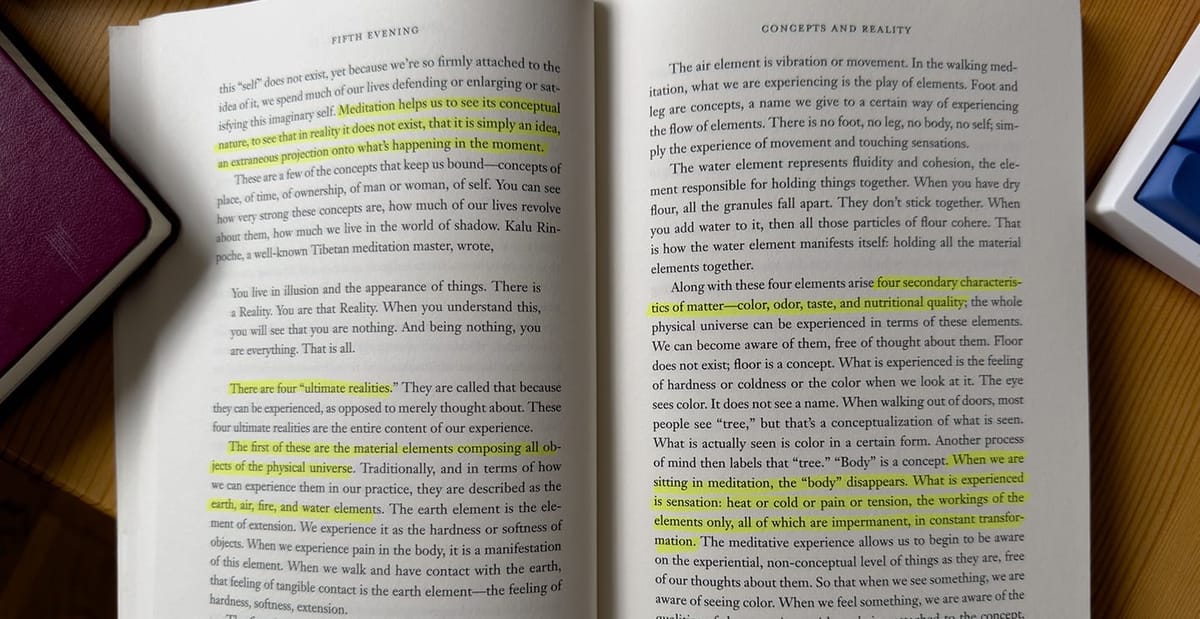
Before we plant the seeds that will eventually grow into an idea or a hybrid of ideas and concepts, we must first lay the soil.
Personal Knowledge Management, or PKM, is not just a complex and sprawling collection of notes and ideas. It is where connections are made, ideas are born, and concepts come to life. It is a magical place where the seeds of a book, article, script or concept spout into fully-fledged work, ready to be shared with the world.

AI-generated image courtesy of Adobe Stock - used under licence
As enthusiasts in the field, we are obsessed with the platform(s), techniques and organisation methodologies that embody the world of PKM and productivity. From zettelkasten to Getting Things Done (GTD), Linking Your Thinking (LYT) and PARA, to name a few. With this comes the simple act of highlighting. Highlighting has been an essential part of learning, from the faint underline from your favourite HB pencil (2B if you’re feeling adventurous) to the permanence of BIC or Staedtier’s brand of pens.
But where does it all begin? What is the soil in which we plant the seed? Well, dear friends, it all starts with the simple and genius tool commonly called the highlighter.
In this blog, I will talk about everything from the rich history of highlighting from analogue to digital methods, the science behind recall and retention, the advantages of utilising an appropriate methodology as part of your Personal Knowledge Management system with a few nuggets from my history and experience to add some flavour.
Buckle up; it’s going to be a wild ride! (I love this stuff 😆)

A History Lesson
At school, when I was doing my GCSE in English Literature, I remember revising for my exams and reviewing The Withered Arm and Other Wessex Tales by Thomas Hardy. In preparation for the exam, I would look through the parts of the book that I had highlighted. It was an unmitigated disaster. I highlighted vast blocks of text, sometimes covering 75% of the page in fluorescent yellow ink and then underlined some sections. Written notes in the margins were not even my thinking but a rewrite of the point that had been highlighted and underlined, and in some circumstances, I’d drawn a very dodgy-looking sketch of Bart Simpson. I think it’s a safe assumption to say that I was not the best highlighter in the world. (I may have even been the worst!) It has been a long time since I have been in school, nearly 30 years, but as I write these words, I wonder if it would be beneficial for young people at school to be taught about the concepts behind highlighting text. Perhaps this would have helped me. Anyway, moving on…
The first maker pen was invented in 1910, but these were not ‘highlighter’ pens. The ink that these pens contained was not transparent. It wasn’t until fluorescent ink with the required level of transparency to make them useful was developed in 1963 by Carter’s Ink that we born the first Hi-Liter. According to the University of Buffalo, the first highlighter pen was an accidental invention. From the article:
Francis J. Honn, then vice president of technology at Carter’s Ink, invented the highlighter by accident in 1963 while trying to create a new nonpermanent marker for children. While experimenting with colors and chemicals, he noticed that swiping water-based fluorescent yellow ink over black print helped call attention to—rather than camouflage—the words. He named it the Hi-Liter. According to The New York Times, by the 1970s, highlighters were preferred over pens to mark text.
This isn’t to say that students did not use different methods before the invention of the highlighter pen. From underlining text to writing in the margins of books, we are adding our additions and focusing on other areas of the material that we deem essential.

Why We Highlight
For most of us, highlighting books, articles, and even snipping sections from an audiobook on Audible, or even from a podcast (a function I’m a huge proponent of) has become a tool that we use to save critical pieces of information it helps to focus our thinking and retain information that we deem to be the most important out of the entire paragraph. It allows us to review and summarise more efficiently and quickly.
Though I’m writing this with a focus on highlighting, I would be doing the article a disservice by not relating it to note-taking. I will talk more specifically about PKM (Personal Knowledge Management) shortly; however, for the ‘Why’, it’s essential to appreciate that most notes we take start with a foundation. The act of highlighting helps to build this foundation on which the note is born, and from that, the idea is grown.
As a great lover of fiction, I also find that I sometimes highlight phrases and prose that I find to be truly inspirational. I may never return to the highlight in my Kindle app or the book in question, or if I do, it may be after a long period. So why do I do this? What is the point if I’m never going to return to it or unlikely to? The answer to this question is not as exciting as some of the prose I’ve read from Easton-Ellis (I’m currently reading The Shards) because I may want to return to it one day. You may be reading a book; it’s a work of fiction, and a sentence resonates with you. You highlight or underline it. You’re simply saying, ‘That’s important’. When we highlight, we don’t always have to have a purpose for highlighting. On Medium, we can highlight sections of articles. When we do this, we’re saying, “Yes, I concur”, or maybe not, and you want to counter the point - but how often do we return to those highlights? I’m guessing not as often as you’d think. And that’s fine. But when you read that word, sentence, and paragraph, it was important to you, which is why you highlighted it.
In the case of the example below, a spread from the book The Experience of Insight by Joseph Goldstein, which I read about three years ago, I read the book with a highlighter as a form of active reading. The book is filled with helpful information and advice for meditation, and I wanted to ensure that I focused on the text when I read it. I have some issues maintaining focus at the best of times, so with a highlighter as my weapon of choice, I found that I can absorb much more of what is being written and also be able to return to it. And, three years later - who’d have known that I would be using it as an example of how to highlight (and those teachings may also become a subject of a future blog, who knows?)
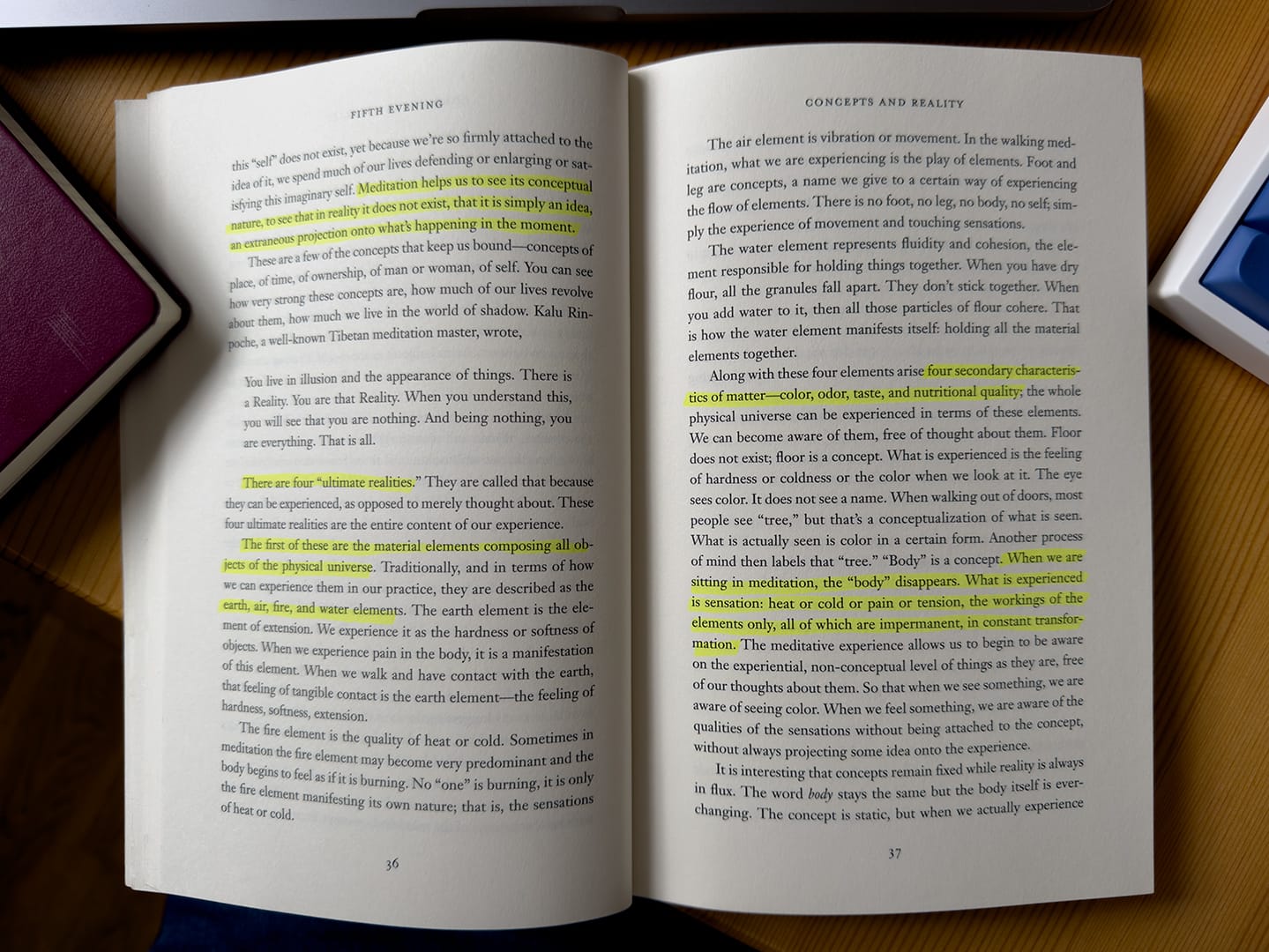
The Science of Recall and Retention
One of the primary reasons, if not the primary reason, why we highlight or underline - drawing attention to - a piece of text is to recall and retain the information for use later. It may be for a paper you’re writing due in a week, a novel, or, as I mentioned already because it resonated with you at that very moment.
But this got me thinking about the science behind how we can recall and retain information, and not all of us can have incredible recall just from reading a book or article without the need for a highlighter.
So what is the science, and how does it relate to highlighting?
In many studies that have been conducted, a few of which I will be referencing here - The first concept I will mention is perhaps the most straightforward and obvious - colour.
In the study, The Influence of Colour on Memory Performance: A Review, the authors were concerned with the interrelationships between colours, attention and memory performance. The study is unambiguous, stating, “Colour helps us in memorising certain information by increasing our attentional level. The role of colour in enhancing our attention level is undisputable” However, it’s not quite so binary. Insofar as there are additional considerations regarding colour, brightness, and contrast. For example, studies have found that white text on a red background had a higher level of stimuli than yellow on red. Which seems pretty obvious, right? But then you think of the KFC Logo and the McDonalds right next door. Which one is more striking to you? I ask this because in the study Highlighting And the Effects of The Color of The Highlighter on Retention: A Review of Literature, (Choudhury et al.) in the subsection ‘Color and memory’ the study reported that “warmer colours such as red, orange and yellow have been recognised to increase learners attention and stimulate their active participation in activities” (Wilson 1966).
There is, however, a disadvantage of using colour as a highlighting tool. When we return to the highlighted text, we are drawn to the highlights (for example, for revision purposes). According to Choudhury, this can leave the student missing the context - and believing they have a complete understanding of what they’re reading - but a failure to highlight effectively can have detrimental effects on the outcome of the purpose for highlighting, and, in this case, failing an exam.

This is corroborated in the study Learning from Text: A Meta-Analysis. (Ponce, H.R.) (Disclosure: Although I read the other two, I didn’t read this one as they asked for £29.95 to download the PDF). However, the abstract says, “The results showed that learner-generated highlighting improved memory but not comprehension... …and instructor-provided highlighting improved both memory and comprehension” I think this is interesting, particularly as a PKM enthusiast because as we collect and process the highlights that we gather from the consumption media available to us and it begs the question: what if we missed the point? The systems we build are only as robust as the data we put into them. And the connection of ideas, which is the core of our systems (usually), could bear much riper fruit if the highlights are right. Do I have the answer? Not really, but I think there is some comfort to those of us who do not have access to a college professor; the study also discloses that as we get older and read more and highlight more, as with any skill, we improve the more we practice it.
The Collector and The User
I was going to save talking about Readwise in the PKM section of this article, but it’s impossible not to mention this service when collecting highlights. For those who are uninitiated, Readwise is a service with an API that takes all your highlights from your Kindle books (and other sources of information, such as Instapaper) and feeds them into your note-taking software of choice. It is amazing. Anyone who is a collector or user of notes will attest to how it’s become the core of how they move data from the various places it can be read. They funnel it into Obsidian or Roam Research, Logseq, and Notion (among others) (Not Capacities yet, as far as I’m aware), where the data is processed.
But as much as I love it, I also hate it. Trawling through all the highlights can be a nightmare if you read a lot. Also, because you’re only getting the specific highlight, you may find yourself having to link back to the highlight in the book or article to refresh your memory on the context of the highlight itself.
This again goes back to the quality of the highlight itself, which we’ll cover in the upcoming section, ‘The Art of Effective Highlighting’.
Highlighting for the Collector
For the PKM and note-taking enthusiasts out there, this is you. (And me). This is where we read and highlight material, and it’s placed in a bank for use at a later date. If you’re keen on making connections, you’ll be quick to process the highlight into a note, and that note will be given a tag, and those tags will be connected. However, new ideas are formed by seeing these connections from a higher level. This is what the zettelkasten method is. Simple ideas are born from reading and other forms of consumption and are connected.
Highlighting for the User
This highlights what we use for immediate and practical use. As I read the studies above, I highlighted sections to refer back to. I then distilled the points made into what you’re reading now. Those highlights will not make it into my PKM; they were single-use. This is because highlighting for a single purpose and highlighting for the evolution of and connecting ideas are two separate things - let me explain why I think this. There are two systems at play here, and the danger of combining them into your main PKM is that it may become bloated and unfocused. Those connections may become contradictory, and the importance of the information may get lost in the sea of connections. It may be a case of not seeing the wood for the trees. And though the hobbyist, the collector if you will, may delight in the sea of connections, my personal experience is that though it looks impressive, its usefulness for immediate and practical use deteriorates. Feel free to disagree with me here. But I can say that I save my research for a particular project in a separate workspace in Capacities. This is, of course, personal preference.

The Art of Effective Highlighting
Is there a best practice we should employ when considering highlighting as an exercise? Is there a right way and a wrong way? I’ve already mentioned that in some of the studies conducted, the academics surmised that the quality of the highlight directly affected the student’s ability to retain the correct information and, more importantly, the context in which the information is presented.
The Open University in the United Kingdom has a brief but helpful guide to what you should think when you decide to highlight a textbook. To paraphrase, the University states that you should first quickly read through the text to get an overview of what it is actually about, then reread it more closely, pausing at the end of each paragraph to identify the main points - this is when the reader should choose what they want to emphasise. The main benefit to this, what I would consider a rather time-consuming process, is that the reader/student can apply the highlighting to a specific agenda that they have. I’ll explain how I recently spotted this method to help develop processes in my day job.
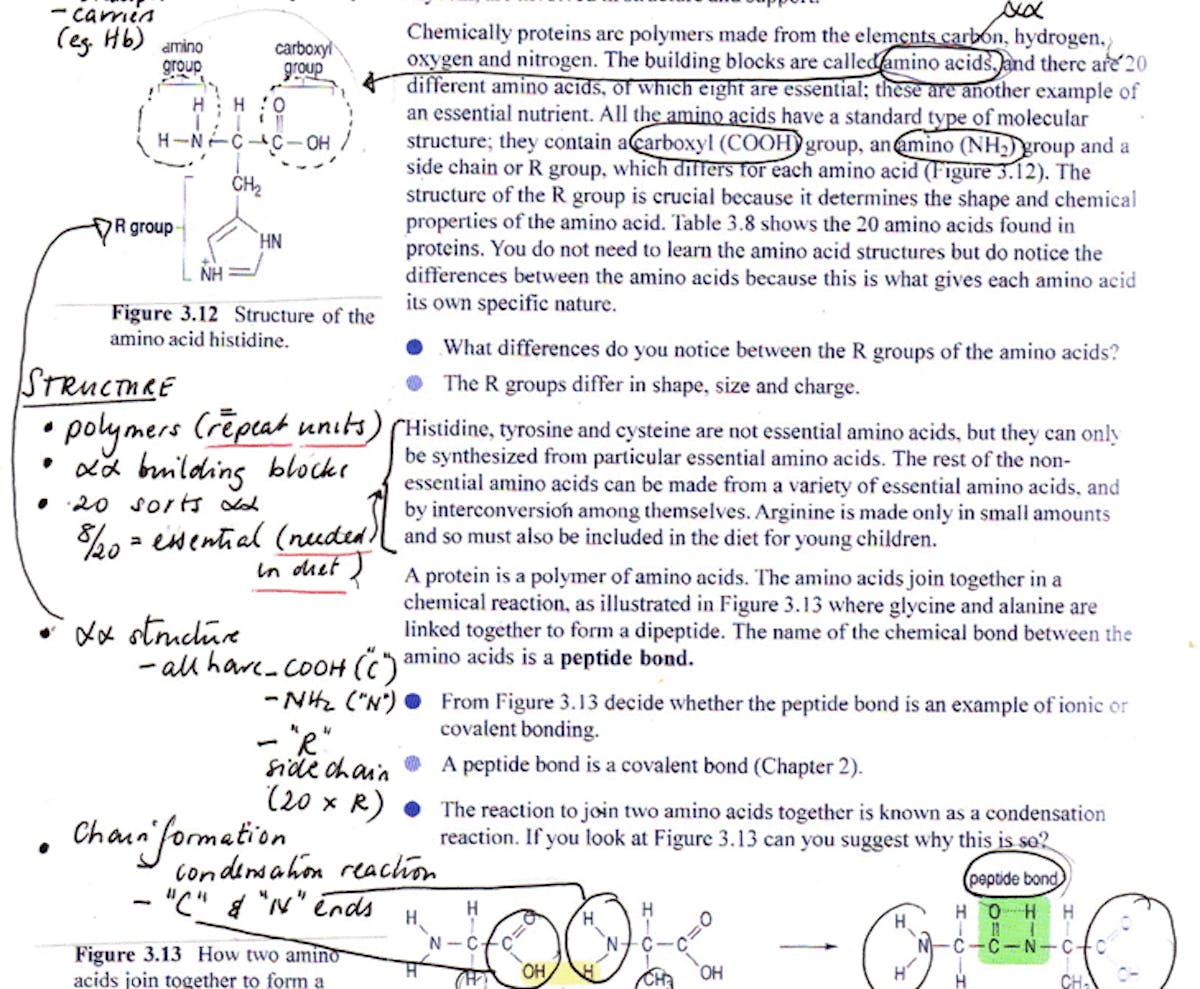
The above image is an example given on the website of a science textbook that has been highlighted and marked up. Note that the use of colour is quite limited.
This method is corroborated by the University of North Carolina at Chapel Hill , who also state that the student should “highlighting key words and phrases instead of full sentences.”
This may be the best methodology, particularly if you’re a student and have a hard copy of a textbook. You only need to glance up and down, left and right, to recall the context of the highlight and remember why it was necessary in the first place.
What about colour?
Colour is essential, and there are dozens of studies on the concepts behind colour-coding theory, of which I will not delve too deeply now, but when it comes to colour, I typically only use one colour. The reason for this is that I, for the most part, read on a Paperwhite Kindle. Of all my devices, it’s easily my favourite. But there is no colour, so when I highlight a passage, it defaults to yellow. I also occasionally read or review Kindle books on the MacOS or iPad app, or if I’m on a busy tram and all the passengers are crammed in like sardines, I may also read on my iPhone - not my favourite way to read a book, I must admit - but needs must. The good thing about the Kindle application for colour devices is that you have options for highlighting in multiple colours, should you wish to use more than one.
If advising a student, I’d recommend using two colours at most. This is because some points will be more important than others. Where you draw the line from ‘most’ to ‘might be’ is personal preference, but with more than two colours, as a reader, student or enthusiast, you may lose your highlights in the ocean of the colour spectrum and, at worst, your highlights become meaningless.
As a professional, I have been moving into the specific specialism of product operations, a fascinating move for me. I first looked into the processes and systems of other people who work in product operations. I watched some videos on YouTube and read a book, of which the book was most helpful. As I read the book, Product Operations: How successful companies build better products at scale, I highlighted areas I deemed valuable. If I had the book in hardcopy, I probably would have gone with the two-colour option, but it was a no-brainer at a fifth of the price on Kindle.
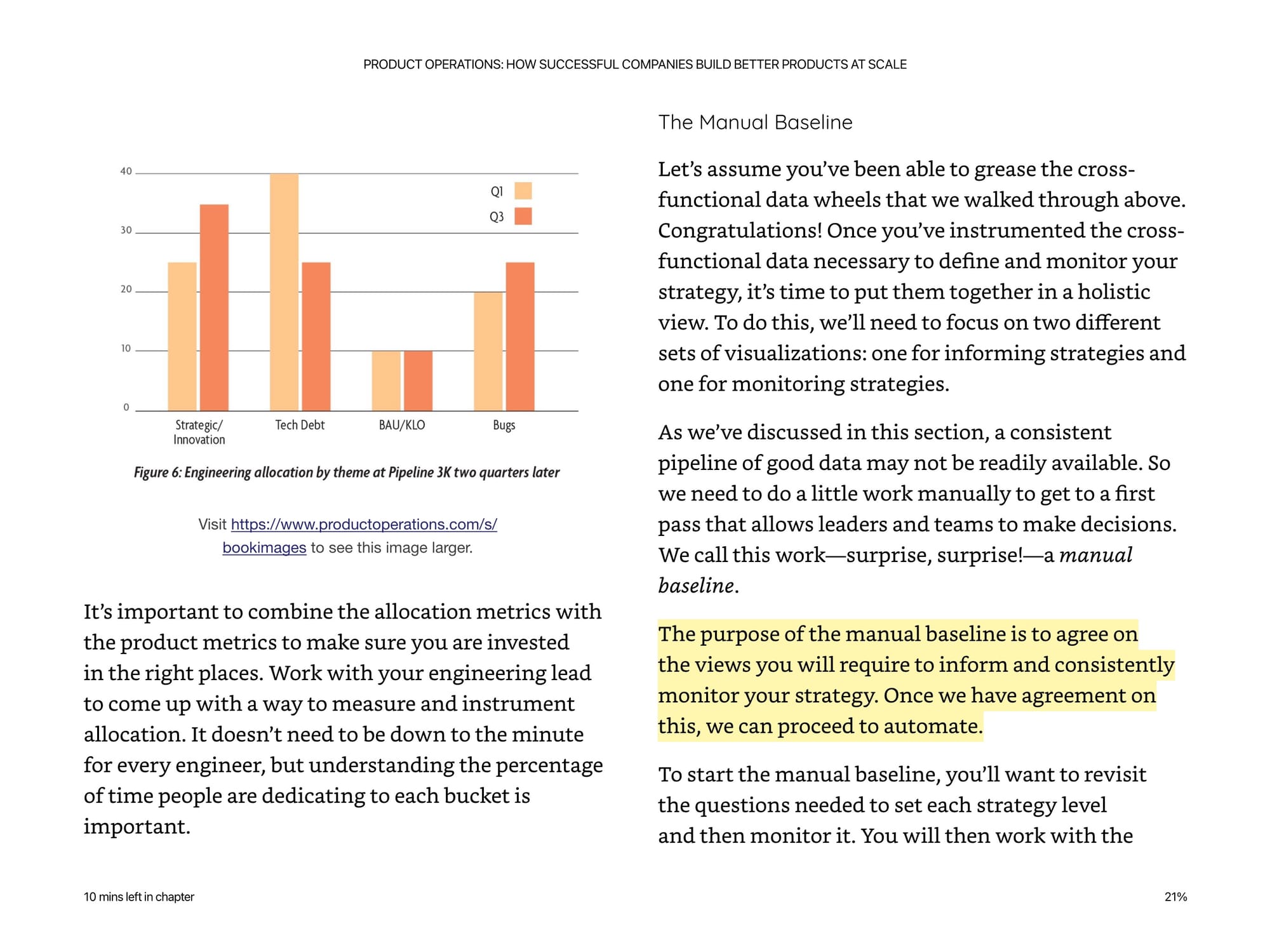
What was the purpose of this exercise? I’d learned from the videos I’d watched online that I’d been doing the function of the core of product operations for some time but without realising it. I’ve been developing systems and processes for efficient service development that coexisted with product development, and I work closely with the product managers. I needed to understand what I was missing and what I could do better. And how do we learn? From our peers.
The book was a goldmine of information, and so I went to highlighting parts that were important to me and specific to answering just two questions:
- Why have a product operations team?
- What does it do?
- How does it do it?
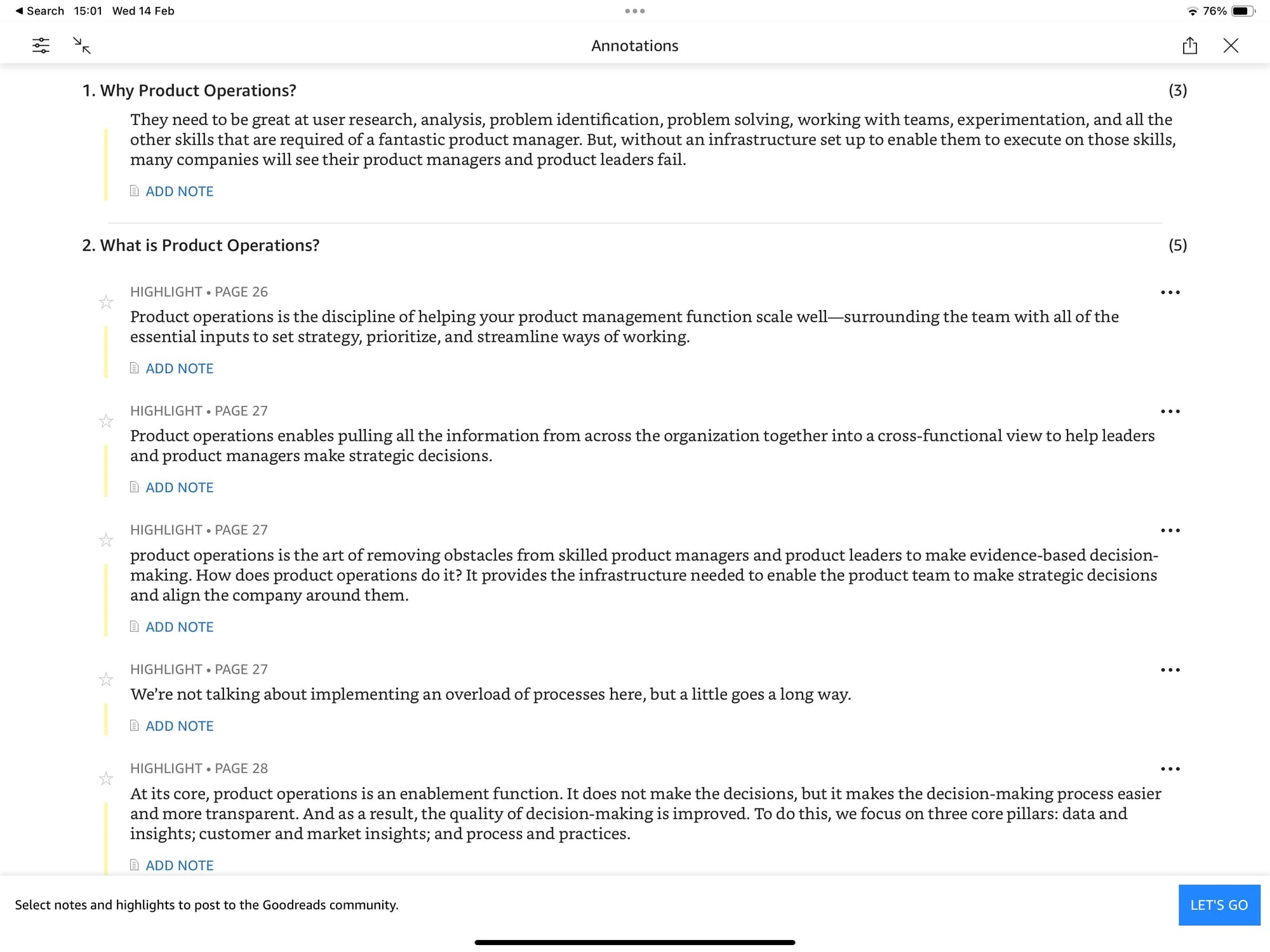
So, the highlights needed to answer those questions. I could have highlighted a ton more; as I say, the book is a goldmine (I might as well drop in an Amazon affiliate link here) , and I could have highlighted much more than I did. If I’m honest, I will probably double-dip into the hard copy version because it’s also a great reference guide, and it’s far easier to flick through actual paper. Anyway, I’m digressing…
In the process of highlighting this book and answering the questions that I needed to get from the text, I was able to extract the highlights and build a product operations process, or at least a proposal for a method based on best practices, but also adjusting it to fit where I needed. But all these started with choosing the right words and phrases to highlight to fit my needs.
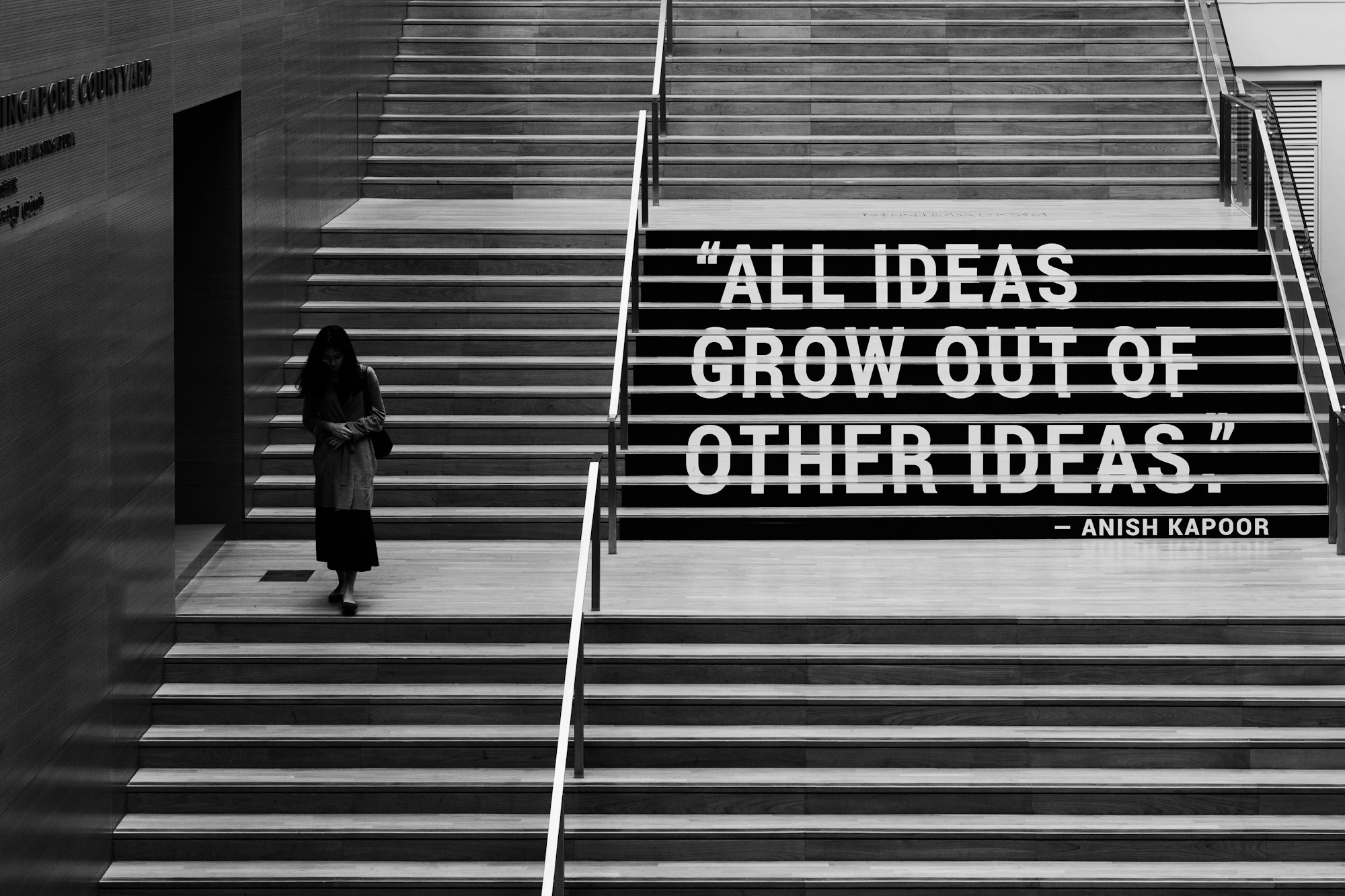
Highlighting and Personal Knowledge Management (PKM)
In the very first section of this article, I wrote about the soil in which we must plant the seeds. Suppose the seeds are the ideas from the content we read and consume. In that case, the soil is not the application you use (because this doesn’t have to apply to digital highlighting and capture, whereas, for the most part, everything I’ve written so far can apply to both), but the collection of highlights themselves.
PKM has become quite trendy over the years, but it’s not new - it wasn’t even new when Nicholas Lehmann decided to buy his first 3x5 card for his slip-box. Knowledge Management probably goes back to the ancient Greeks, or even further to when early man drew images on walls, recording their life back then. But again, I’m digressing.
Highlighting is an integral part of any system that can fall under the umbrella of PKM for all the reasons I’ve mentioned. The recall, identification, and prioritisation of important information start with the most straightforward actions.
And PKM falls into so many different categories where highlighting is essential. I’ve already covered academia, but also in software development, where developers working on complex projects will use highlighting to emphasise parts of their code for reference in the future, the new functions they learn, errors, debugging - any on-the-job learning can be easily saved and returned too, just by simply highlighting it.
In the publication industry - copy editors will use highlighters; as you can see in the image below, in the draft of the article you’re reading now, I printed it out and marked it up for errors. (Apologies if you have made it this far and are still finding errors!)
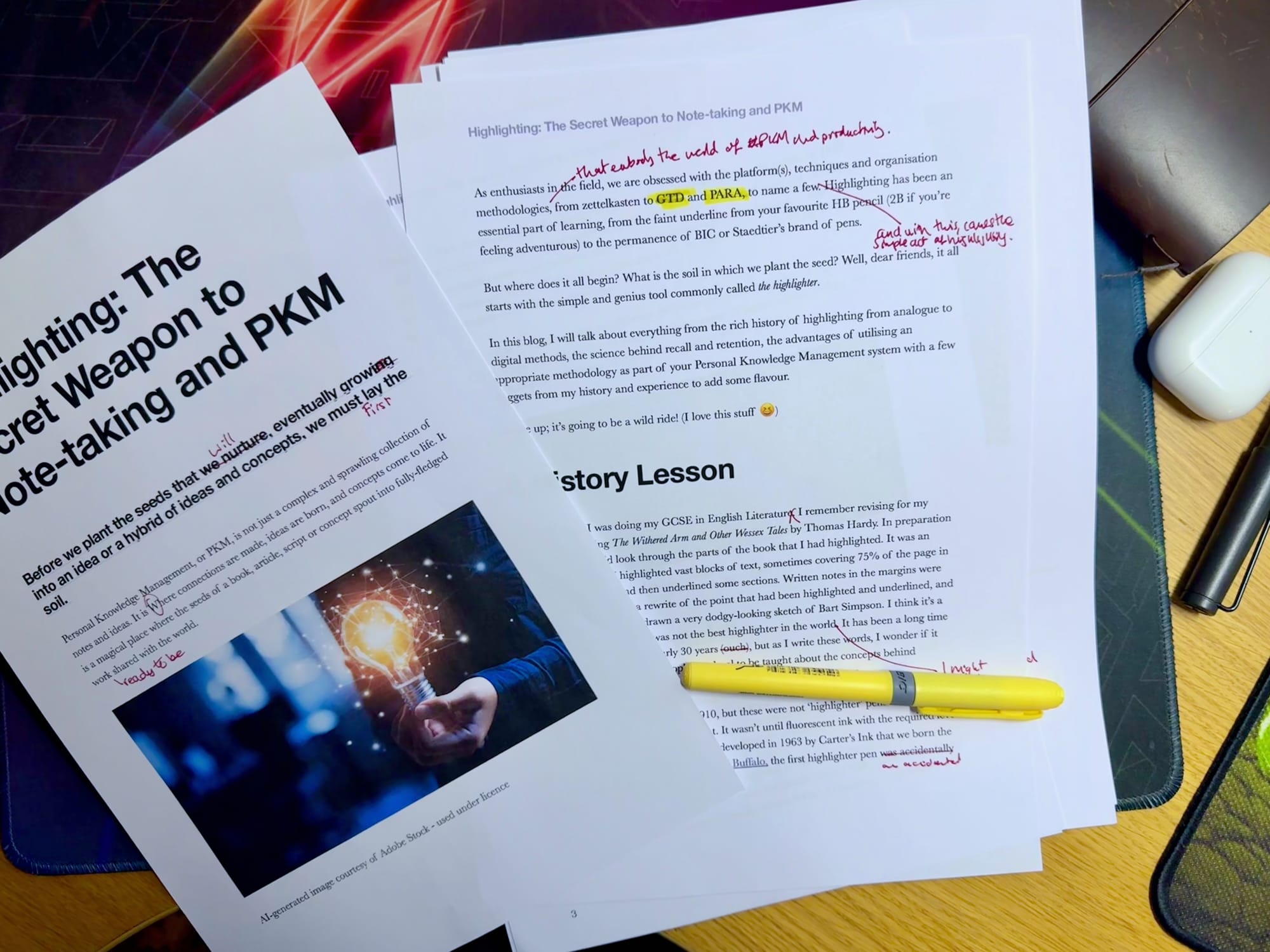
At work, we have shared documentation that many people will work on; thanks to SharePoint and Microsoft Teams, multiple people can work on a document simultaneously. I often see highlights that people add as a reminder to review a section. In some cases, we’ve been able to assign a highlighting colour to a different person to avoid confusion.
These are just a few examples, but I’m sure there are plenty more.
The key takeaway is that highlights in PKM stretched far beyond the collection of information that the Readwise API gathers. Data capture and processing can be used to develop and evolve any knowledge management system. However, this does come with some caveats.
The system needs to have a ruleset that is followed by all; as I said before, the highlight needs to be the right one, and the note needs to be helpful in some way so all users who input into that system must follow the same methodology to enable it to work - otherwise, it’ll become a mess, and nobody will use it.
Final Thoughts
So, highlighting - it’s such a simple action, but the most powerful. I certainly believe that any knowledge enthusiast from your favourite Obsidian, Notion, or Capacities creator will have sat with their highlighter and selected the information they want to save and use later. It helps us to retain information and create new ideas.
The most straightforward ideas are simply the best, so the next time you’re sat with a highlighter (and this is going to sound cheesy) but you’re in a long time of academics, writers, directors, philosophers, leaders and innovators who did the same thing that you’ll be doing. So, I guess the secret weapon isn’t that much of a secret; it just needs to be wielded correctly.
Thank you for reading. Happy Highlighting!
References
Dzulkifli, M. A., & Mustafar, M. F. (2013). The Influence of Colour on Memory Performance: A Review. The Malaysian Journal of Medical Sciences : MJMS, 20(2), 3–9. https://www.ncbi.nlm.nih.gov/pmc/articles/PMC3743993/
Roy Choudhury N. & Bhansali N. (2022). Highlighting And the Effects of The Color of The Highlighter on Retention: A Review of Literature. International Journal of Indian Psychology, 10(1), 479–483. DIP:18.01.045.20221001,DOI:10.25215/1001.045
Ponce, H.R., Mayer, R.E. & Méndez, E.E. Effects of Learner-Generated Highlighting and Instructor-Provided Highlighting on Learning from Text: A Meta-Analysis. Educ Psychol Rev 34, 989–1024 (2022). https://doi.org/10.1007/s10648-021-09654-1
https://blog.innerdrive.co.uk/using-highlighting
https://help.open.ac.uk/notetaking-techniques/highlighting-annotating



